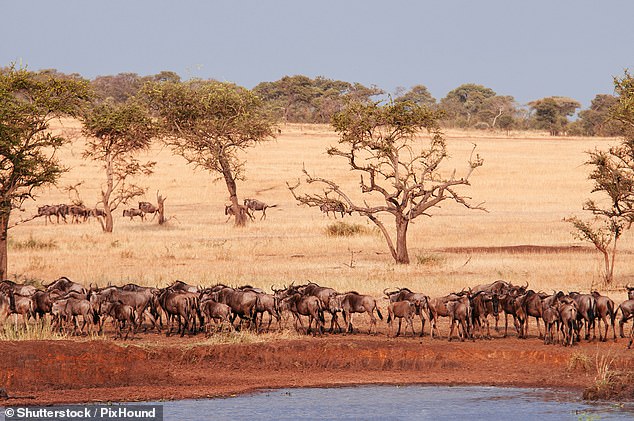SMALL CAP SHARE IDEAS: Shanta Gold’s shares have risen 500% in two years.. have they got more to go?
A combination of existing and profitable production and significant exploration upside is the holy grail in the mining industry, at least as far as the junior and mid-tier companies are concerned.
Shanta Gold is a company that shows the way in this regard, with its high margin New Luika gold mine in Tanzania generating ample cash to acquire new properties and go out and explore them.
But it wasn’t always thus.
‘How far we’ve come in such a short amount of time,’ muses Shanta chief executive Eric Zurrin.

Shanta’s shares are currently priced at around 19p, up 500% compared to two years ago
Two years ago the Shanta share price was bumping along at ten year lows, as relations between the Tanzanian government and the mining industry soured.
The souring was nothing to do with Shanta, but it got swept up anyway in the backdraft of the self-destruction of the once mighty Acacia Mining.
It took the world’s powerful gold mining executive, Mark Bristow of Barrick, to clear up that mess, but now, with Tanzania back on the world’s hot list of gold mining destinations, Shanta once again has a clear run in a country that it has operated in on its own terms without difficulty for many a long year.
And while all that chaos was working its way through the system and out the other side the gold price soared. Shanta’s share price has roared away in turn, to its current level of just below 19p.
That’s a rise of nearly 500 per cent in the space of two years, and there’s no sign that it is going to stop there.
In its last set of interims, for the six months to June 30, 2020, Shanta reported revenues of more than $70million, and net profits of $15million. That was a significant improvement on the losses booked in the corresponding period a year earlier, and helped the company pay off the last of its construction debt.
But what was really noticeable is that for almost all of that period the gold price was trading at less than $1,700 per ounce. Indeed, for much of it, the price was bumping along at $1,500.
Now, with gold fully consolidated above $1,900, margins look like even better for the current period, during which time Shanta reckons it can take overall production for the full year to between 80,000 and 85,000 ounces.
Yes, costs are up a bit, but you’d expect and perhaps even want that when the selling price is up by so much more.
All told, it’s an admirable foundation from which to build up any company looking to move from junior to mid-tier status.
Which is where the second of Shanta’s major undertakings, the 1,200 square kilometre West Kenya project, comes in.
West Kenya is relatively new to the company, born of an opportunity that arose out of the aforementioned self-destruction of Acacia Mining, which was unloading assets left right and centre in its last days, in a bid to secure value.
Zurrin and his team hadn’t quite closed the acquisition when Acacia was finally put out of its misery and subsumed by Barrick, but they were so keen to get it done that they flew to Tanzania that same weekend and camped out in the office of the senior Barrick director responsible and re-pitched the deal personally.
‘To their credit,’ says Zurrin, ‘they honoured the deal.’
And Shanta was now the proud owner of a district-scale parcel of land in Kenya which already boasted one established resource of 1.2million tonnes of ore grading 12.6 grams per tonne for just under 1.2million ounces of gold.


Tanzania is back on the world’s hot list of gold mining destinations
The company expects to be able to put out a preliminary economic assessment on this resource imminently, and there can be no question that this represents the next big development project that Shanta will undertake.
In the meantime though, there’s also the Singida project, which sits some way below both New Luika and West Kenya in terms of scale, but which should also end up delivering a significant contribution and take annual production to over 100,000 ounces.
Financing discussions around Singida are close to completion, according to Zurrin, and he expects it will start in production in 2022.
Even allowing that the development of Singida is likely to be funded from cashflow, there’s also the distinct possibility that Shanta will shortly join that rare breed of junior miners that actually pays a dividend.
It all adds up to an enticing proposition in a market that has been very receptive to gold miners of late.
It’s true that the market has to some extent recognised Shanta’s success with the re-rating that began two years ago.
But on the other hand, there’s still plenty of ground to be made up before the shares return to where they were at the time of the last bull market for gold.
And Shanta’s a different company now – more secure in its production at New Luika, more outward looking in terms of expansion, ready to develop new projects, and much more comfortable in Tanzania itself, where its ESG programs are second to none.

